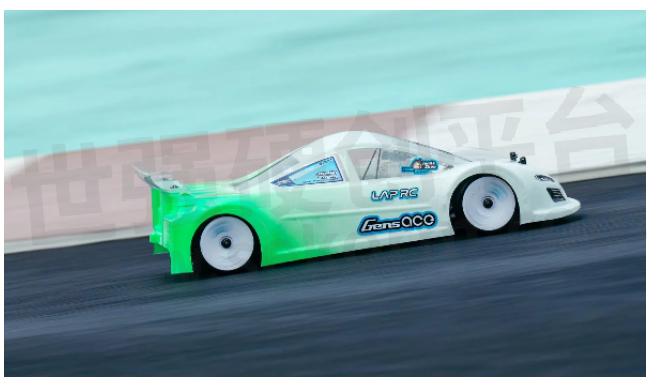On-Road RC Car Battery Selection Guide




Remote-controlled (RC) cars have evolved significantly over the years, attracting enthusiasts of all ages with their high-speed thrills and competitive racing. Among the various types of RC cars, on-road RC cars are specifically designed for smooth surfaces like asphalt or concrete. This guide provides a comprehensive look at on-road RC cars, their types, applications, and crucially, how to choose the right battery to maximize performance and longevity.
What are On-Road RC Cars?
On-road RC cars are miniature versions of real cars, meticulously designed for running on paved surfaces. They are characterized by their sleek designs, low ground clearance, and smooth tires, which enhance speed and handling on flat surfaces. These cars are ideal for racing and high-speed driving, offering enthusiasts the excitement of competitive racing in a scaled-down format.

Fig.3
Types of On-Road RC Cars
On-road RC cars come in various styles and configurations, catering to different preferences and skill levels. The main types include:
●Touring Cars: These are the most popular type of on-road RC cars, designed for precision handling and high-speed performance. They often come with adjustable suspension systems and high-grip tires.
●Drift Cars: Designed for controlled sliding around corners, drift cars feature special tires and chassis setups that allow for smooth and continuous drifting.
●Semi Trucks:RC semi trucks are primarily designed for on-road use. They perform best on smooth, flat surfaces like concrete, asphalt, or indoor tracks.
●Rally Cars: Rally cars are versatile and can handle both on-road and off-road environments. They are built to transition smoothly from asphalt to dirt tracks, making them suitable for mixed-surface racing and bashing.
On-Road RC Cars vs. Off-Road RC Cars
While both on-road and off-road RC cars provide thrilling experiences, they are designed for different environments and purposes:
●On-Road RC Cars: These cars are built for speed and precision on smooth, flat surfaces. They have low ground clearance, smooth tires, and aerodynamic bodies to minimize air resistance and maximize speed.
●Off-Road RC Cars: Designed for rugged terrains, off-road RC cars have higher ground clearance, durable suspension systems, and knobby tires to handle dirt, gravel, and rough surfaces. They are built to withstand jumps, bumps, and rough handling.
The choice between on-road and off-road RC cars depends largely on where you plan to drive them and what kind of driving experience you seek.
Purpose of On-Road RC Cars
On-road RC cars are designed to provide a realistic driving experience on smooth, paved surfaces. They are engineered for high-speed performance, precision handling, and detailed scale modeling. The primary purposes of on-road RC cars include:
Racing:
On-road RC cars are predominantly used for racing due to their speed and agility. They are designed to navigate tight turns and long straights on smooth tracks, making them ideal for competitive environments where precision and speed are crucial.
Bashing:
While not as common, some on-road RC cars are used for bashing. Bashing refers to driving RC cars for fun without the competitive aspect, often involving high-speed runs, stunts, and casual driving on streets, parking lots, and other paved surfaces.
Scale Modeling and Collecting:
Many on-road RC cars are designed with detailed, realistic bodies that appeal to collectors and hobbyists interested in scale modeling. These cars often replicate real-world vehicles, providing enthusiasts with an opportunity to enjoy the aesthetics and engineering of their favorite cars in miniature form.
Drifting:
On-road RC cars are also popular for drifting, a sport that involves controlled sliding around corners. Drifting combines elements of racing and bashing, emphasizing style and precision over sheer speed.
How to Choose a Battery for On-Road RC Cars
Choosing the right battery is crucial for maximizing the performance and longevity of your on-road RC car. Here are the key factors to consider:
Battery Type:
●Nickel-Metal Hydride Battery(NiMH Battery): These are beginner-friendly batteries that are safe and easy to use. They offer decent performance and are more affordable but lack the power and longevity of more advanced batteries.
●Lithium-Polymer Battery(LiPo Battery): These batteries are the preferred choice for serious RC enthusiasts due to their high energy density, lighter weight, and ability to deliver higher power. They require careful handling and proper charging to prevent damage and ensure safety.
Voltage and Cell Count:
The voltage of a battery determines the power it can deliver. On-road RC cars typically use 2S (7.4V) to 3S (11.1V) LiPo batteries. Higher voltage batteries can provide more speed but require compatible electronic speed controllers (ESC) and motors.
Capacity (mAh):
The capacity of a battery, measured in milliamp-hours (mAh), indicates how long the battery can last. Higher capacity batteries provide longer run times but are also heavier. Balance is key to maintaining performance without adding unnecessary weight.
●For Racing: Choose a battery with a capacity between 2000mAh and 3000mAh. This range provides a good balance between runtime and weight, ensuring your car remains lightweight and fast. Grepow Redline 1.0 and Redline 2.0 RC battery are ideal for On-Road racing car use.
●For Bashing: Opt for a battery with a capacity between 3000mAh and 5000mAh or higher. This will provide longer runtimes, allowing for extended play sessions without frequent recharging.
Discharge Rate (C-Rating):
The C-rating indicates how quickly a battery can discharge its stored energy. Higher C-ratings provide more power, which is essential for high-speed racing. Ensure your ESC and motor can handle the chosen battery's discharge rate. Higher C-ratings provide more power, which is crucial for high-speed performance. A C-rating of 30C to 60C is common for on-road RC cars.
Size and Fit:
Ensure the battery fits within the designated compartment of your RC car. Different models have specific size requirements, so check the dimensions before purchasing.
Charging and Maintenance:
Invest in a quality charger compatible with your battery type. Proper charging and storage practices are essential to maintain battery health and safety. Avoid overcharging or discharging LiPo batteries to prevent damage.
Conclusion
On-road RC cars offer a thrilling and competitive hobby for enthusiasts of all skill levels. Understanding the different types of on-road RC cars, their applications, and the critical aspects of choosing the right battery will enhance your driving experience and ensure you get the most out of your vehicle. Whether you're racing on a track or bashing in a parking lot, selecting the appropriate rc car battery will provide the power, performance, and longevity needed for your on-road RC adventures.
- |
- +1 赞 0
- 收藏
- 评论 0
本文由三年不鸣转载自Grepow Official Website,原文标题为:On-Road RC Car Battery Selection Guide,本站所有转载文章系出于传递更多信息之目的,且明确注明来源,不希望被转载的媒体或个人可与我们联系,我们将立即进行删除处理。
相关推荐
How to Custom Your Special-shape Battery?
In this passage, Grepow will look at some applications equipped with the curved lipo battery and a tool that especially helps you design the special-shape battery.
Tips for maintenance and emergency disposal of agriculture drone battery
In this article, Grepow talks about how the agriculture drone battery is daily maintained, and how to dispose of it when there is an emergency.
RFID Tags Battery Guide
As the world becomes increasingly interconnected through the Internet of Things (IoT), the demand for efficient and reliable tracking systems has never been higher. Radio Frequency Identification (RFID) tags, particularly those powered by batteries, play a crucial role in this landscape. From tracking merchandise to monitoring livestock and even safeguarding patients, RFID technology offers unparalleled advantages in various applications.
Can Lipo Battery Cells Be Shipped by Air?
With the widespread use of electronic products, batteries nowadays have become household items that we can see everywhere. The most commonly encountered type of battery is the lithium-ion battery.
The Ultimate Guide to WiFi Drones
WiFi drones offer an incredible mix of technology, usability, and entertainment. Whether you‘re capturing breathtaking aerial footage or exploring FPV flying, they‘re an excellent choice for beginners and enthusiasts. By understanding their features, connectivity options, and limitations, you can select the perfect drone to suit your needs. As a global leading lipo battery manufacturer, Grepow offers high-energy-density UAV batteries and high-discharge-rate FPV batteries for various WiFi Drones.
Prescription vs OTC Hearing Aids: What‘s the Difference?
If you value convenience, long-term savings, and eco-friendliness, rechargeable hearing aids could be the better choice. However, if you prefer a lower upfront cost and the simplicity of changing batteries without worrying about charging, disposable battery models might be more suitable. Both options are available in prescription and OTC hearing aids, so you can make a choice that best suits your lifestyle and hearing needs.
Buggy vs. Truggy: Exploring the Competitive World of RC Racing
In the dynamic world of RC racing, two chassis types have reigned supreme for decades: the buggy and the truggy. These two classes have a rich history, each with its own unique characteristics and benefits. Let‘s dive into the origins and evolution of the iconic buggy. The Evolution of Buggies: From Humble Beginnings to Racing DominanceThe RC Buggy has a long tradition when it comes to remotecontrolled model cars. Today, most racers prefer the RC buggyin the off-road, all-wheel drive (4WD) version.
What Is a 6S LiPo Battery?
Lithium Polymer (LiPo) batteries are widely used in drones, RC vehicles, and various other applications due to their lightweight, high energy density, and power delivery. Among these, 6S LiPo batteries are particularly popular. This guide explores their specifications, types, and applications.
Round LiPo Battery: A Comprehensive Guide
Round LiPo batteries offer a versatile and efficient power solution for a wide range of applications. With their compact design, high energy density, and customizable features, they are an excellent choice for modern electronic devices and specialized equipment. Grepow‘s innovative solutions further enhance the potential of round LiPo batteries, making them a reliable option for various industries.What is a Round LiPo Battery?A round LiPo battery, or round lithium polymer battery, is a type of rechargeable battery with a circular shape.
How Drone Light Shows are Created and Key Battery Power Requirements
This paper mainly introduces the application of Grepow‘s battery products in Drone Light Shows, and introduces the battery requirements for the application of drone light shows.
Top LiPo Battery Manufacturers You Can Trust
This paper introduces the key characteristics, routine applications, product characteristics and factors to be considered in customer battery selection of GrIP lithium battery products
What Is a 3.8V LiPo Battery?
A 3.8V LiPo (Lithium Polymer) battery is a type of rechargeable battery with a nominal voltage of 3.8 volts per cell. This type of battery has gained popularity in various applications, particularly in the realm of drones, RC models, and other high-performance electronics. The 3.8V LiPo battery is often referred to as a “high voltage“ (HV) LiPo, distinguishing it from the more common 3.7V LiPo batteries.
Drone Mapping vs. Drone Surveying: What’s the Difference?
This article mainly tells Grepow about the difference between drone mapping and drone surveying and introduces the working principle of the two types of drones.
How to Choose LiPo Battery for Drone?
In the world of drones, the right battery can make all the difference. Lithium Polymer (LiPo) batteries have become the go-to choice for drone enthusiasts and professionals alike, thanks to their high energy density, lightweight construction, and ability to deliver high discharge rates. If you‘re new to the drone scene or looking to upgrade your current setup, here‘s everything you need to know about LiPo batteries for drone.
Grepow Custom Lipo Battery Pack Solutions for Consumer Electronics, Drones, UAVs, EVs and So on
Grepow‘s custom Lipo Battery Pack solutions offer unmatched flexibility, performance, and safety for a wide range of applications. By leveraging advanced technology and extensive customization options, Grepow ensures that each battery pack is tailored to meet the specific needs of its customers. Whether for consumer electronics, drones, electric vehicles, or industrial equipment, Grepow‘s LiPo battery packs provide reliable, high-performance power solutions.
电子商城






































































































































































































登录 | 立即注册
提交评论